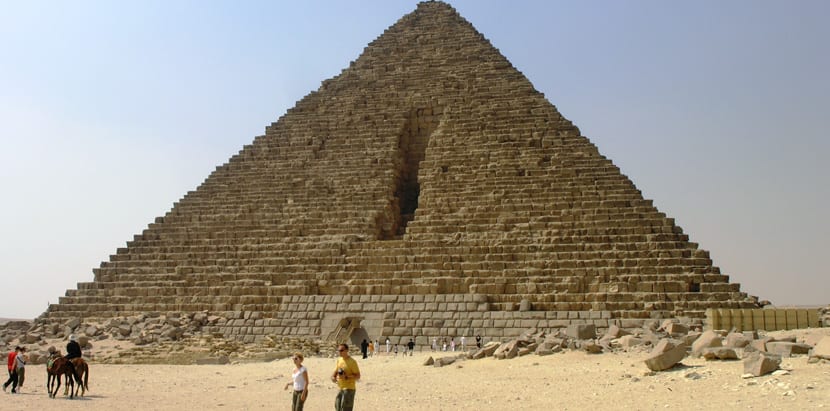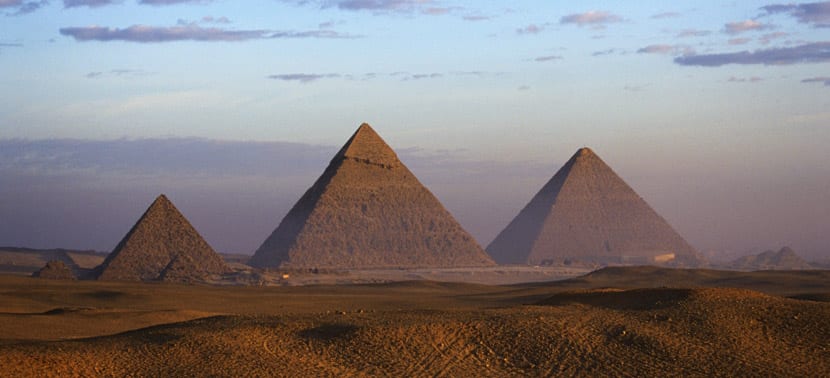
When I was a child I wanted to be an Egyptologist and although in the end I ended up studying Communication Egypt remains in my heart forever. The Pyramids of Egypt are one of the great mysteries of Humanity And although there are people who think they know their secrets, the truth is that they still have mysteries.
You cannot visit Egypt without knowing the pyramids. They are synonymous. We are talking about the three most important pyramids since it is worth remembering that they are not the only ones and that apparently there are more than a hundred pyramids in Egypt. And how old are they really? It is a question that has many answers, it depends on who we ask. Archaeologists will tell you that they were mostly built between the Old and Middle Kingdom periods and that the oldest of all dates from about 2600 BC.
If instead you ask an archaeologist more open to new interpretations, they will tell you that there are pyramids, the three most important for example, that of Cheops, Khafren and Menkaure, which are much older and that in reality what you see in Egypt is a skill or engineering in decline rather than on the rise. What do you think? Are you one of those who believe in extraterrestrial or human but pre-diluvian civilizations?
The Giza Pyramids Complex
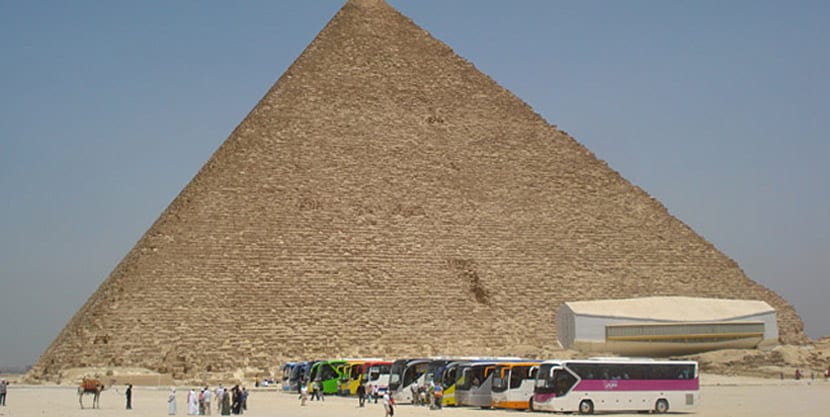
On the Giza plateau are the three most famous pyramids in Egypt: Cheops, Khafre and Menkaure. Around it are several other buildings, among smaller pyramids and temples and a Great Wall, the Wall of the Crowd. Outside of it, the ruins of a kind of town have been discovered that are still being excavated. Although at first it was speculated that they could be the barracks of the builders of the pyramids, today it is suggested that it was where the sailors and soldiers who used the port lived.
As well a series of holes or wells in the shape of boats have been discovered around the Great Pyramid. Of course there are not even traces of them but in the 50s a new well was found, the fourth, and very heavy and huge stone nails did appear in it and after fourteen years of research and conservation it was shaped into a boat over 40 meters long. Today there is a museum about this well and while it was being built, in 2011, another boat well was found. Marvelous!
The great pyramid
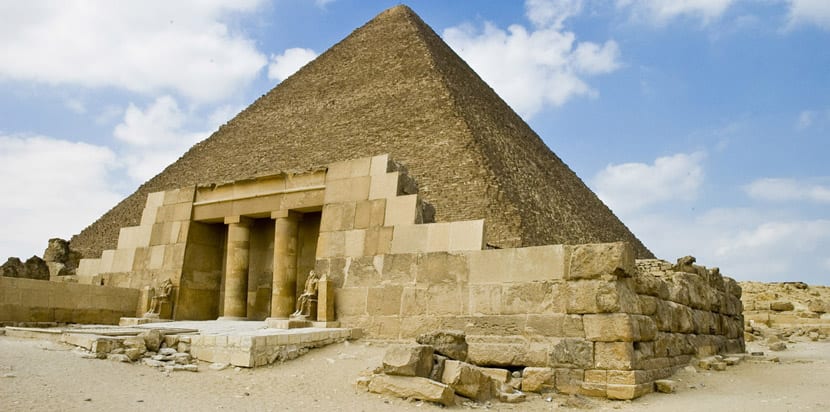
The most popular pyramid in the world is the Pyramid of Cheops, also known as the Great Pyramid. It is considered the oldest and largest of the trio. The idea that has most penetrated the specialists, based on a name carved in an internal chamber that directly relates it to the fourth dynasty and to Pharaoh Khufu, is that the pyramid was the royal tomb and that it took about twenty years to build , construction that took place around 2600 BC
The Pyramid of Cheops was originally covered with perfectly carved stones that fit together and were, apparently, glued with some kind of cement. The result was a smooth, even surface. Inside the Great Pyramid has three chambers, the lowest one is carved into the ground itself below the pyramidal structure. Already in the pyramid are the so-called King's Chamber and Queen's Chamber.
If we leave these somewhat pompous names aside, the design of its interior does not resemble that of a tomb and for that reason it is a mystery. Furthermore, a body or a royal sarcophagus was never found inside it and what is called a "sarcophagus" is a thick rectangular stone box.
The Pyramid of Khafre
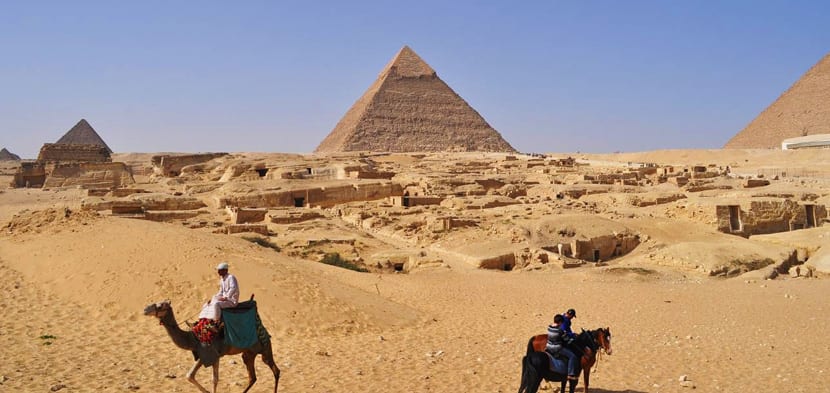
This is the second tallest pyramid in Giza and it is believed that it is the tomb of the Pharaoh Khafre who reigned in Egypt 2500 years BC It is 136.4 meters high although originally it was about ten meters higher. It is made with blocks of limestone weighing more than two tons each. It has a sharper angle of construction than that of the Great Pyramid and as it is built on higher ground than the Great Pyramid it even appears taller.
It seems like the Pyramid of Khafre was raped by thieves thousands of years ago. It does not have the original coating either, although apparently this theft occurred in the seventeenth century because a record from that time speaks of those soft and light-colored stones. When the Italian explorer Belzoni arrived in 1818 he found that there was nothing in the inner chamber except an open sarcophagus. The truth is that in the surroundings of this second pyramid there was also a complex of temples, surprisingly enough preserved to be imagined: a mortuary temple with a colonnaded courtyard, niches with statues, warehouses and a sanctuary.
The Pyramid of Menkaure
This is the smallest pyramid of the three and it is believed that it was the tomb of Pharaoh Menkaure. It is 61 meters high, although it originally reached 65 and a half meters and is built with limestone and red granite. It is not well known when it was built because it is not known when this pharaoh reigned reliably.
An English explorer discovered in the middle of the 14th century in an internal chamber the remains of a wooden sarcophagus with the name of Menkaure and human bones. The Carbon XNUMX technique determined that the bones are less than two thousand years old so they do not belong to the pharaoh. Further inside, another basalt sarcophagus was found but it cannot be seen because when he was traveling by boat through the Mediterranean to England the ship sank.
Other theories the origin of the Pyramids of Giza
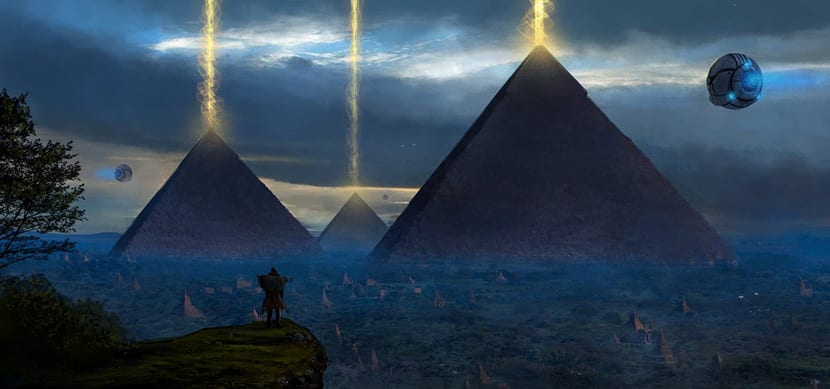
Up to here is the information that is had of the Pyramids of Giza. One chooses whether to blindly trust the word of archaeologists, who sometimes assume too much, or whether to be open to other interpretations that do not always come from that "crazy" world of the paranormal and aliens. There are many scientists, geologists, astronomers, physicists, who have studied the pyramids and have other opinions.
You have to keep an open mind: Egypt, Sumer, the Mayan civilization, tell us that human beings have ever reached a certain level of knowledge about electricity, electromagnetism, metallurgy, medicine, chemistry, electrochemistry and hydraulics, for example. If there was a mother civilization that was the origin of that knowledge and one fine day it disappeared or if that knowledge came from the stars at the moment we do not know. But you shouldn't refuse to consider it either.
Nowadays There are two very interesting parallel theories about the Great Pyramid: one says that it could have been an electricity generating plant and another part of a gigantic antenna to communicate with something or someone located in what we call the Orion Constellation (in relation to which the pyramids are located). What do you think?
